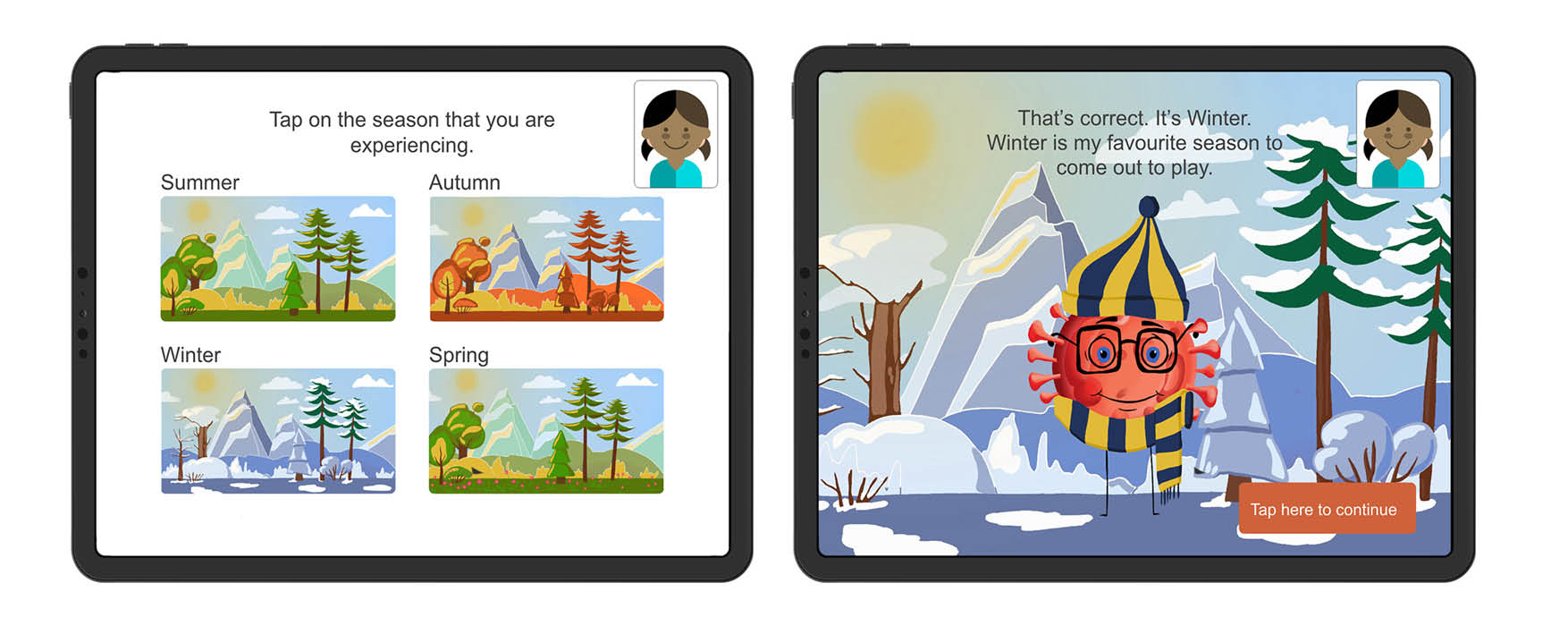Elanor Finch
Opportunity space
The semester 1 2020 design brief for Design Thinking required us to explore interactive technologies that draw on
real-time data to encourage people to participate in an emergency response. I focused my design research on the
current global health pandemic for three reasons, which demonstrate the need for an appropriate design solution
1.Pathogens and communicable diseases have killed more humans throughout history than anything else
2.The number of new and emerging infectious diseases are increasing in frequency
3.The rapid spread of COVID-19 demonstrates the unprecedented social, cultural and economic impacts that a communicable disease can have on all aspects of life.
Identifying user needs
User centred research (including a triangulation of primary methods including observations, questionnaire and interviews) indicates that individual responses should focus on confronting a health crisis with solidarity, remaining connected,and wanting to feel in control of behaviours and attitude, to reduce the risk of panic driven reactions that threaten containment measures.
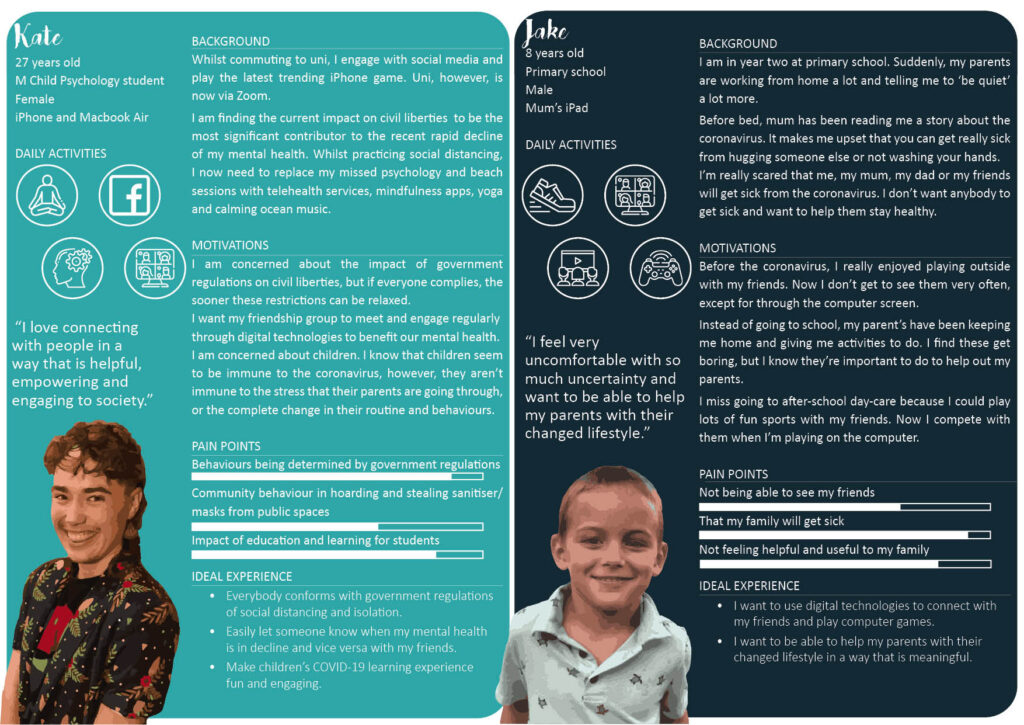
The issue
Almost 50% of my sample population have children between the ages of 6 and 12, and 90% had explained the global health pandemic to them. When resources were used, 67% of parents reported their child expressing a negative emotion with sadness, fear and crying being the most referenced emotions. However, when resources were not used, this figure increased to 75%.
In addition, there are no design solutions that simultaneously addresses parents and children’s needs. My solution is developed in response to:
. Parents keeping their children connected to their friends via zoom meeting
. Parents expressing a desire for more learning resources for their children
. My persona, Jake, indicates disconnection from his friends is a pain-point, and would like to use digital technologies
to connect with his friends and play computer games.
. Children want to feel helpful to their parents and empowered to assist their friends.
Process, strategy for the development of ideas and use of resources
I have undertaken an iterative design process, which not only included concept sketching, storyboarding and wireframing, but incorporated three rounds of user testing (via Zoom) using a think aloud protocol. Users included a parent, a primary school teacher and a 7 year old child. Feedback was incorporated into my design at each stage. For example, the primary school teacher gave crucial feedback on how a child’s mind works in terms of instruction and action, allowing me to amend my prototype to ensure streamlined thought processes and action.
In addition, I drew on academic precedence, such as Hassenzahl’s (2003) concepts of design perspectives, product character and product attributes (both pragmatic and hedonic attributes) to ensure that the intended outcomes of my design correspond to the user experience.
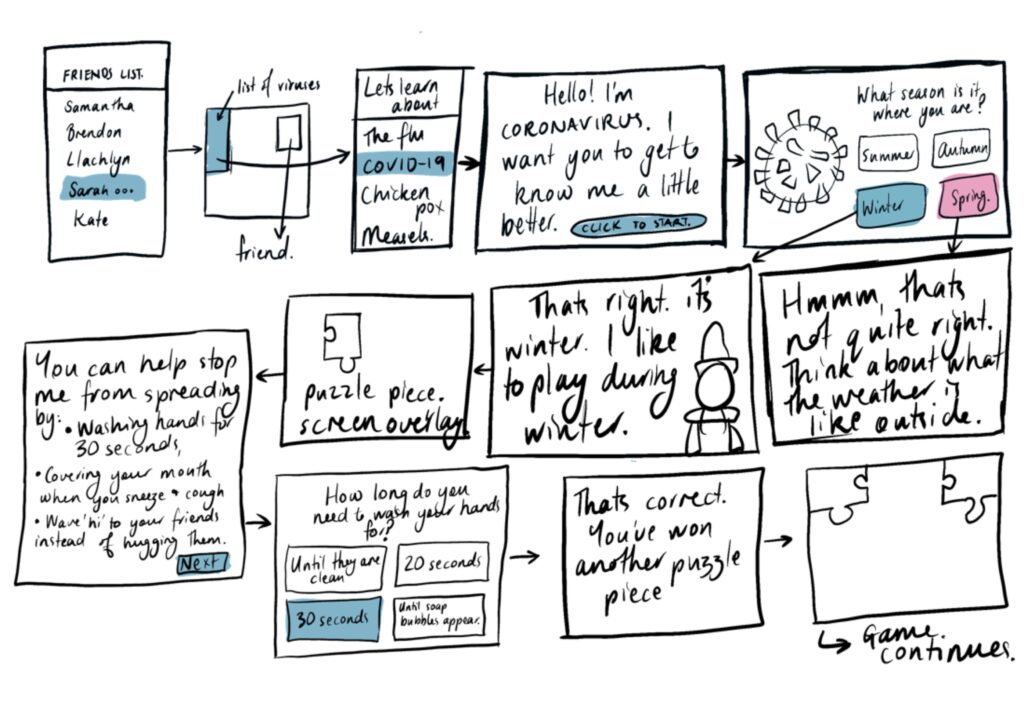
Solution: an interactive learning game for children
The aim of the game is threefold. First, to educate children about coronavirus to alleviate fear of the unknown. Second, to provide children with an avenue to remain connected with their friends during a time of social-distancing and homeschooling. Finally, to reiterate the World Health Organisation and Centre for Disease Control and Prevention guidelines about safe practices during a global health pandemic in an engaging way.
To complete the game, children are required to virtually connect with a friend, select a virus or pathogen to learn about, and then work together through a series of interactive games and quizzes to build a puzzle. Progression to the next level (and attainment of a puzzle piece) cannot take place until both users select the correct answer.
This function seeks to ensure that children are equipped with adequate knowledge to participate in a global health pandemic in a way that is meaningful and contributes to pro-containment measures.
In addition, the game draws on real time data, via the sending of feelings and thought reports, which inform parents of their child’s understanding and mental health status.
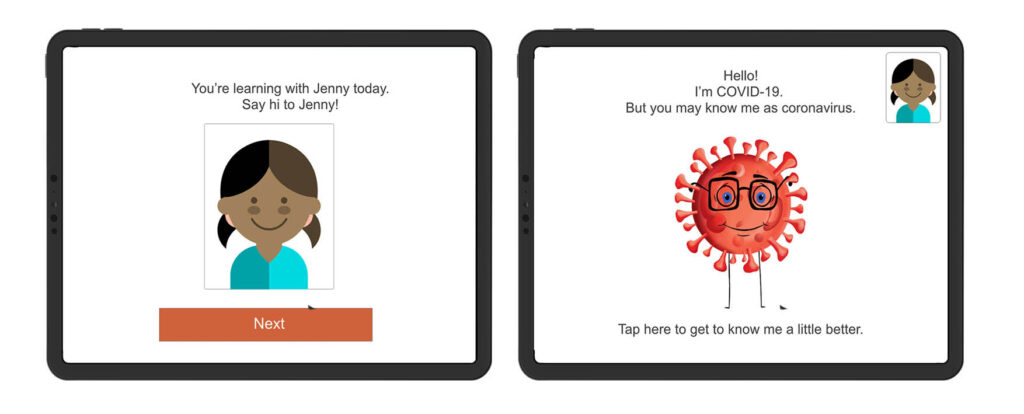
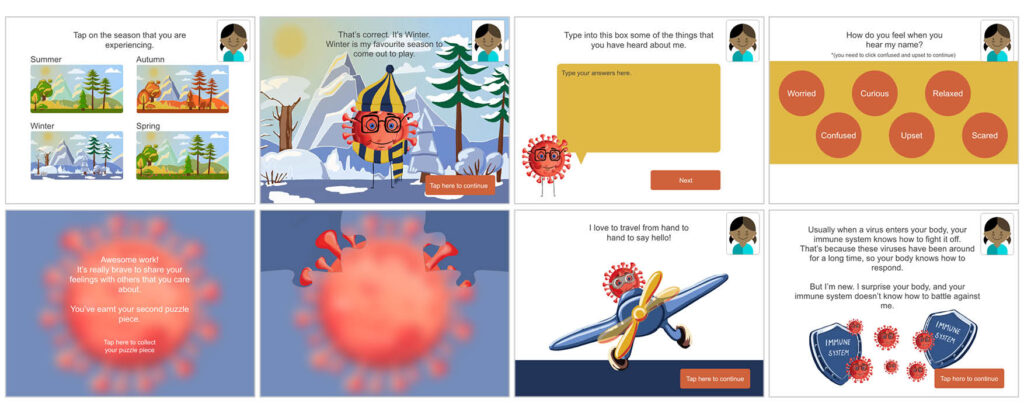
References
Hassenzahl, M. The thing and I: understanding the relationship between user and product in (Eds) Blythe, M. Monk, A.
Overbeeke, K. and Wright, P. (2003), Funology: from usability to enjoyment, Kluwer Academic publishers, Netherlands, pg.31-42.
